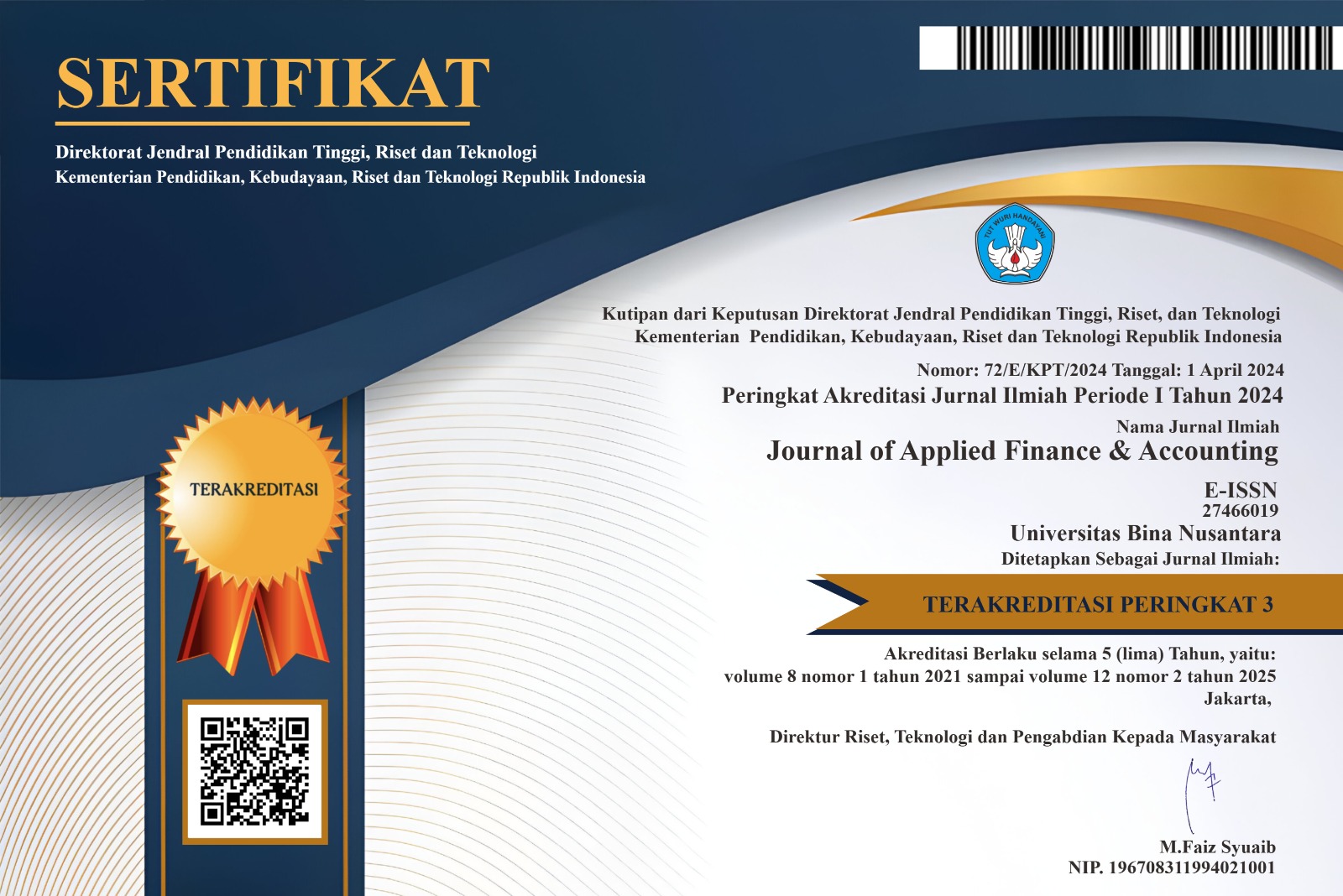BANK MONITORING AS AN EXTERNAL GOVERNANCE MECHANISM AND THE BORROWERS’ FIRM VALUE
DOI:
https://doi.org/10.21512/jafa.v6i1.835Keywords:
corporate governance, bank monitoring, bank loan, firm value.Abstract
The objective of this research is to examine the effect of bank monitoring as an alternative of corporate governance mechanisms on the borrowers’ firm value. The strengths of bank monitoring on the borrowers are measured based on the magnitude of the bank loan, the size of the loan from banks with high monitoring quality, the length of a bank loan outstanding period, and the number of lenders. The research hypotheses were tested using multiple regression model with a sample of 230 companies listed in Indonesia Stock Exchange during 2009. The empirical results show that only the size of the loan from banks with high monitoring quality and the number of lenders significantly influences the borrowers’ firm value. These findings imply that only banks with high monitoring quality could play an important role in the corporate governance and therefore increasing the firm value by their monitoring function.  Furthermore, bank monitoring is less effective if a company borrows from many banks, and therefore decreasing the firm value.Â
Downloads
Published
Issue
Section
License
Authors who publish with this journal agree to the following terms:
Authors retain copyright and grant the journal right of first publication with the work simultaneously licensed under a Creative Commons Attribution License that allows others to share the work with an acknowledgement of the work's authorship and initial publication in this journal.
Authors are able to enter into separate, additional contractual arrangements for the non-exclusive distribution of the journal's published version of the work (e.g., post it to an institutional repository or publish it in a book), with an acknowledgement of its initial publication in this journal.
Authors are permitted and encouraged to post their work online (e.g., in institutional repositories or on their website) prior to and during the submission process, as it can lead to productive exchanges, as well as earlier and greater citation of published work (See The Effect of Open Access).




